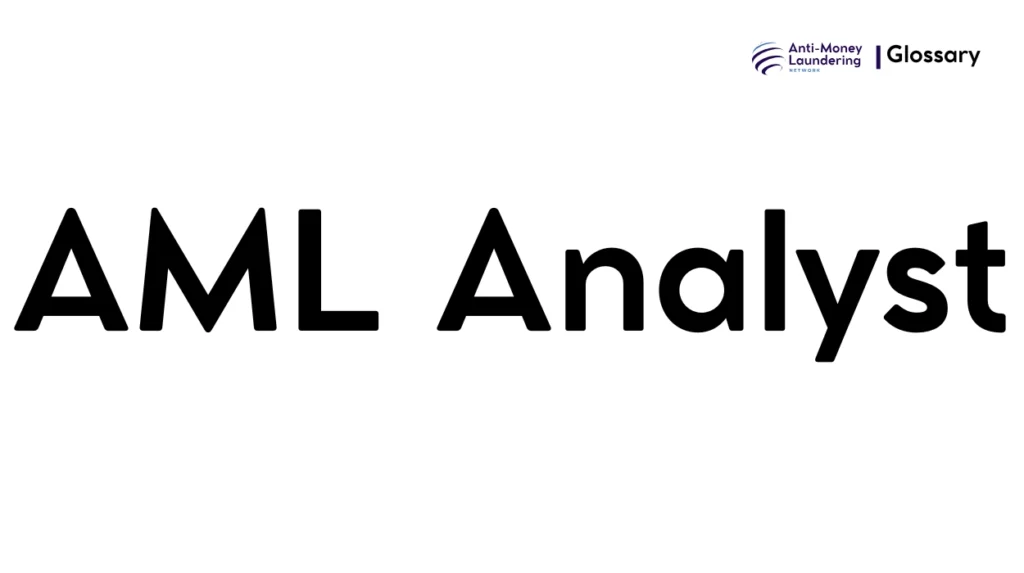Understanding the role of an AML Analyst is crucial for compliance officers and financial institutions actively combating financial crimes. This comprehensive guide explores the definition, purpose, regulatory basis, practical applications, and evolving landscape surrounding the AML Analyst role.
Definition
An AML Analyst is a specialized professional responsible for identifying, analyzing, and reporting suspicious financial activities that may indicate money laundering or terrorist financing. They leverage data analysis, transaction monitoring, and regulatory guidelines to detect patterns inconsistent with legitimate financial behavior.
AML Analysts operate within financial institutions or regulatory bodies to ensure compliance with anti-money laundering laws and safeguard the financial system from illicit activities.
Purpose and Regulatory Basis
Role in AML
The core purpose of an AML Analyst is to detect and prevent money laundering activities by scrutinizing customer transactions and behaviors, thereby protecting institutions from regulatory penalties and reputational damage.
Why It Matters
Money laundering conceals criminal proceeds and facilitates illegal activities, including drug trafficking, terrorism, and corruption. AML Analysts serve as a frontline defense by identifying suspicious activities early.
Key Global and National Regulations
- Financial Action Task Force (FATF): Sets international AML standards.
- USA PATRIOT Act (2001): Enhances AML frameworks in the U.S., mandating customer due diligence and suspicious activity reporting.
- EU Anti-Money Laundering Directives (AMLD): European Union’s evolving AML regulations to strengthen institutional controls.
AML Analysts ensure institutional adherence to these frameworks, shaping transaction monitoring policies and reporting mechanisms.
When and How It Applies
Real-World Use Cases
AML Analysts engage routinely in monitoring:
- Large or unusual transactions inconsistent with a customer’s normal activities.
- Transactions involving high-risk countries or politically exposed persons (PEPs).
- Complex transaction structures possibly designed to obscure origins.
Triggers and Examples
Typical triggers for AML investigation include:
- Sudden surge in account activity.
- Use of multiple accounts to break down large transactions (smurfing).
- Transactions with parties listed on sanction or watch lists.
Upon identifying such triggers, AML Analysts perform in-depth reviews and escalate findings for potential reporting.
Types or Variants
Role Variants
While the core functions are similar, AML Analysts may specialize as:
- Transaction Monitoring Analysts: Focus on automated alerts generated by AML systems.
- Enhanced Due Diligence (EDD) Analysts: Handle high-risk cases requiring deeper investigation.
- Sanctions Screening Analysts: Concentrate on ensuring compliance against embargoes and sanction lists.
Industry-Specific Roles
Certain industries—banking, insurance, investment firms—may tailor AML Analyst activities to sector-specific risks and regulatory requirements.
Procedures and Implementation
Steps for Compliance
Financial institutions deploy AML Analysts within structured frameworks involving:
- Customer Due Diligence (CDD): Verifying customer identity at onboarding.
- Transaction Monitoring: Continuous screening using software tools to flag risky behavior.
- Alert Investigation: Detailed analysis of flagged transactions by AML Analysts.
- Reporting: Filing Suspicious Activity Reports (SARs) to regulatory authorities when warranted.
Systems, Controls, and Processes
- Robust AML software platforms powered by machine learning enable efficient identification of anomalies.
- Regular training ensures Analysts remain current on emerging typologies.
- Collaborative interfaces between compliance teams, legal, and regulators facilitate swift action.
Impact on Customers/Clients
Customer Rights and Restrictions
Customers may experience enhanced scrutiny, especially if classified as high-risk, including:
- Requests for additional documentation or explanations.
- Delays or holds on transactions pending investigations.
- Potential account closures if illicit activity is suspected.
Interaction Perspective
AML Analysts must balance regulatory compliance with customer service, maintaining clear communication and confidentiality while safeguarding against financial crime.
Duration, Review, and Resolution
Timeframes
- Initial investigations typically occur within days of alert generation.
- Enhanced due diligence may extend the review to weeks.
- Ongoing monitoring is continuous for the lifespan of the customer relationship.
Review Processes
Periodic reviews of customer profiles and transaction patterns help identify evolving risks.
Ongoing Obligations
Institutions have a duty to update AML programs based on findings and regulatory changes to maintain effectiveness.
Reporting and Compliance Duties
Institutional Responsibilities
- Submit Suspicious Activity Reports (SARs) or equivalent to financial intelligence units (FIUs).
- Maintain detailed documentation of all investigations and decisions.
- Cooperate with regulatory audits and law enforcement as required.
Documentation and Penalties
Comprehensive record-keeping supports institutional transparency and defense during regulatory scrutiny. Non-compliance can lead to significant fines, legal actions, and reputational damage.
Related AML Terms
AML Analysts work closely with concepts such as:
- Customer Due Diligence (CDD): Identification and verification processes.
- Suspicious Activity Reports (SARs): Formal reports filed upon suspicion.
- Politically Exposed Persons (PEPs): Individuals requiring enhanced scrutiny.
- Transaction Monitoring Systems: Software tools assisting analysts.
Understanding these interconnections enriches the effectiveness of AML efforts.
Challenges and Best Practices
Common Challenges
- Handling high volumes of alerts leading to “alert fatigue.”
- Balancing thorough investigations with customer experience.
- Keeping pace with evolving laundering techniques.
Best Practices
- Employ advanced analytics and AI for smarter alert generation.
- Conduct periodic training and knowledge sharing.
- Foster a culture emphasizing ethical compliance and continuous improvement.
Recent Developments
Trends and Technology
- Increased use of Artificial Intelligence (AI) and Machine Learning (ML) enhances risk detection.
- Adoption of RegTech solutions streamlines compliance processes.
- Greater regulatory focus on cryptocurrency transactions demands new expertise.
Regulatory Changes
- Updates to FATF recommendations emphasize a risk-based approach.
- Emerging national regulations introduce stricter transparency and beneficial ownership disclosure.
The AML Analyst plays a pivotal role in safeguarding financial institutions against money laundering and terrorist financing risks. By combining regulatory knowledge, analytical skills, and technological tools, AML Analysts ensure robust compliance, protect institutional integrity, and promote a trustworthy financial environment essential for global economic stability.

